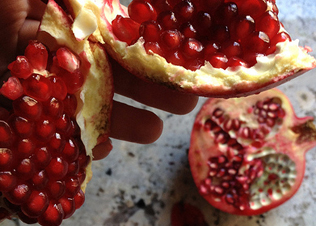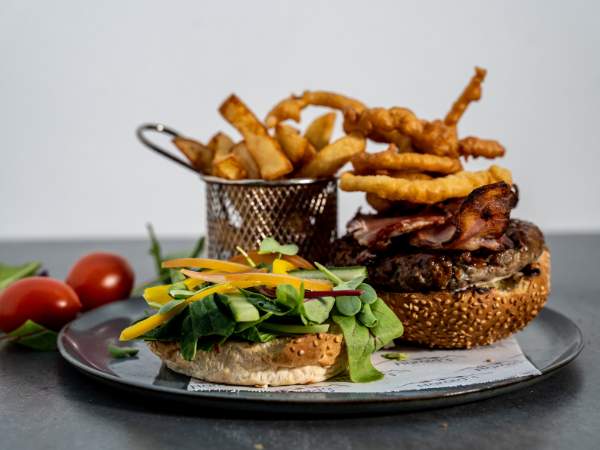News
Quince and pomegranates
Wednesday, March 20th, 2013
It is wonderfully comforting to see the supermarkets showcasing the first of the autumn season’s fruit and vegetables. Right now, the sightings are of young quinces and pomegranates. The thought of these fruits being in season makes me anticipate warm and hearty Moorish food, which I love to cook and eat.
Not like the summer’s bounty of smooth, perfect-skinned peaches and plums, these fruit are rustic and knobbly, making you think they were made especially for hearty dishes.
My fondest quince memory is of the first time I ate at Marianas in Stanford. A pile of slow-roasted quince on an over-sized cream platter was placed on a table in the dining room. They were crimson red – which is what happens when you slow roast them – and they looked like a still-life painting, glistening in their syrupy juices.
Something that I struggle to buy here is Spanish membrillo, a quince paste that’s traditionally eaten with a sheep's milk cheese. It’s pretty easy to make: cook up a lot of quince with sugar and lemon juice, purée it, and add more sugar until it’s thick and jammy. It lasts for ages and is particularly good with pork.
Another avid lover of this paste is Australian food doyenne Maggie Beer, who stole our hearts in the latest Australian MasterChef. In the Barossa Valley you can buy her own branded tubs of quince, plum and blood orange. I visited her restaurant and farm many years ago; I remember her roasted lemon risotto and truffle-infused honey fondly.
The first time I sampled pomegranate molasses was at local Lebanese restaurant The Cedars in Sea Point, which has since closed. The owners Marlene and David made everything, from the labneh to the flat bread. If I could, I would slather this tart, sweet, dark, luscious syrup on most things. At The Cedars, you drizzled it on kifta, which is raw lamb mince served with ice-cold slices of onion and lemony, salty and sweet tabbouleh. Although you can buy bottles at a few selected delis, it’s also quite easy to make by reducing good quality pomegranate juice with sugar. But if you can get your hands on some of the real deal, it’s so worth it.
In the meantime, I have my own still life: a wooden board of pomegranates and green quince waiting to ripen on my dining room table. They’ll be ripe just in time for Easter and I’m thinking of making a recipe I saw in the latest Ottolenghi cookbook, Jerusalem: lamb stuffed with pomegranate and coriander. It’s based on a Persian dish and although it calls for only scatterings of the ruby jewel-like pearls of pomegranate, I’ll make sure to fit in a little drizzle of the molasses somewhere.
Happy eating!
Abigail








